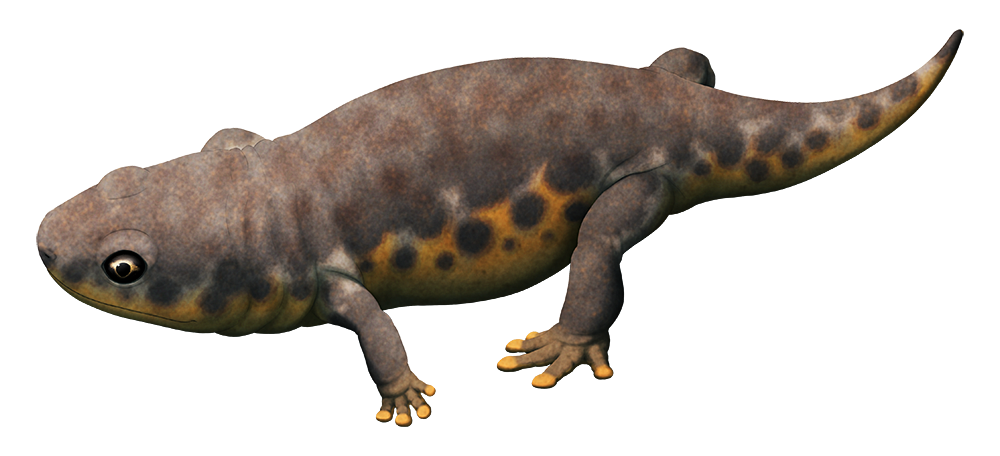The evolutionary origins of modern amphibians are still a bit murky, but one of the most likely possibilities is that they evolved from a group of temnospondyls known as amphibamiformes. (Or, at least, that frogs-and-salamanders evolved from them. Caecilians might be a different type of temnospondyl.)
And a recent discovery adds a little bit more evidence to that hypothesis.
A new specimen from the 309-million-year-old Late Carboniferous Mazon Creek fossil deposits in Illinois, USA, shows some soft-tissue impressions around the body of a terrestrial amphibamiform* — most notably showing its toes, with chunky rounded fleshy pads at the end like those seen in many modern amphibians.
Fossil trackways already suggested that some terrestrial temnospondyls had chunky toes, but up until now all known soft-tissue impressions only showed the slender tapering toes of aquatic forms. This is the first direct fossil evidence of toe pads, and hints that a lot of modern amphibians’ soft-tissue features may have actually had a very ancient origin.
(*A more precise identification couldn’t be made, but it shows some similarities to both Doleserpeton and Pasawioops.)

